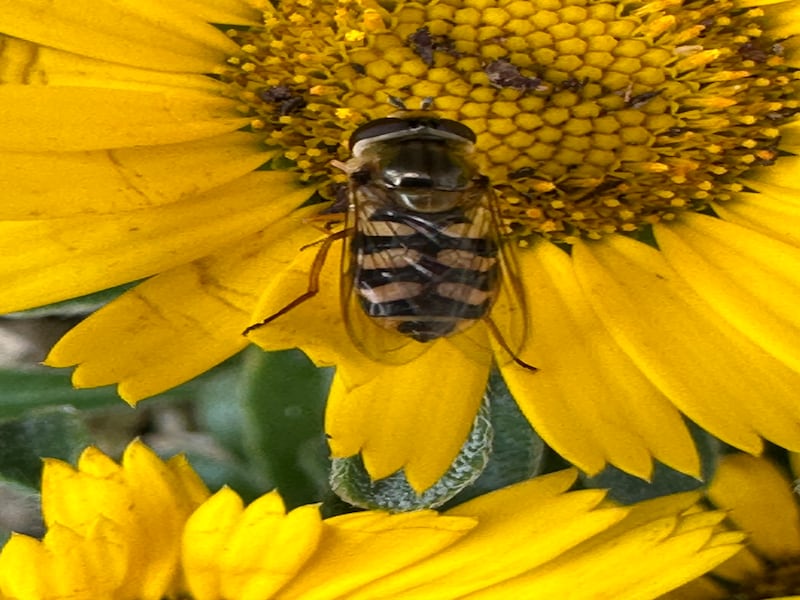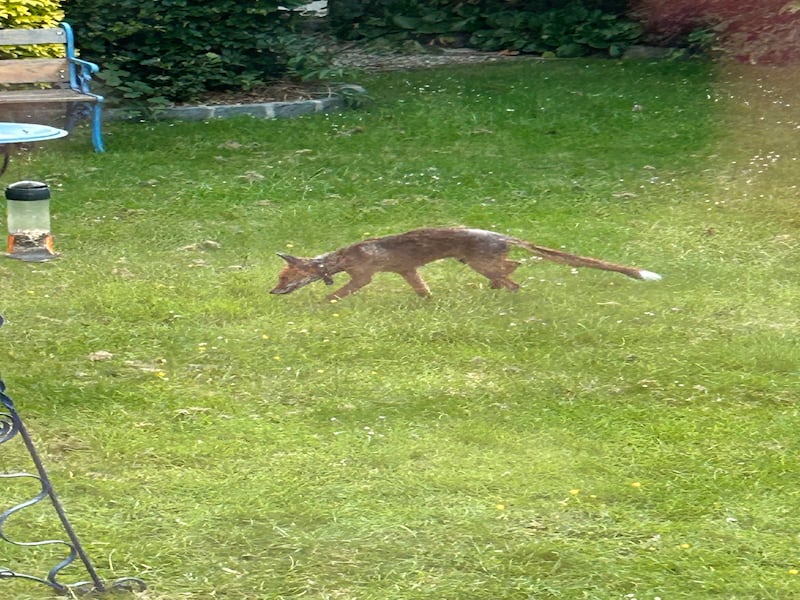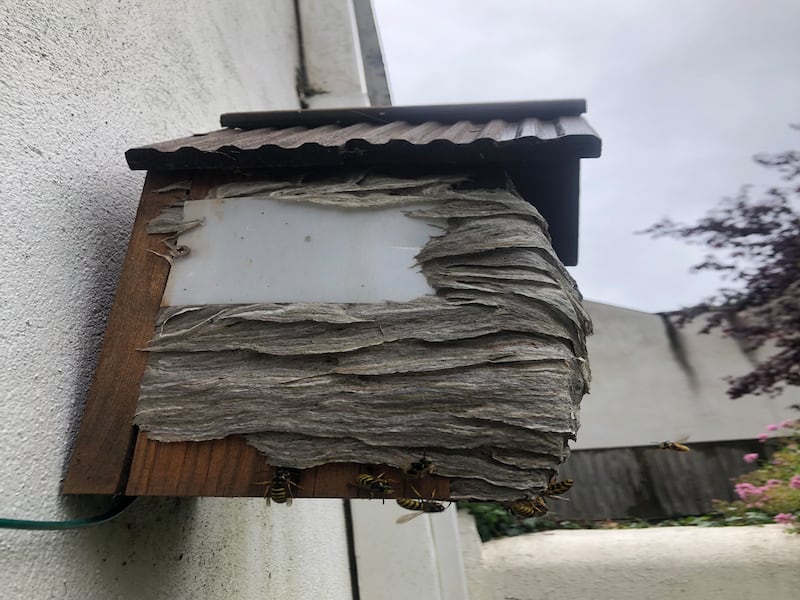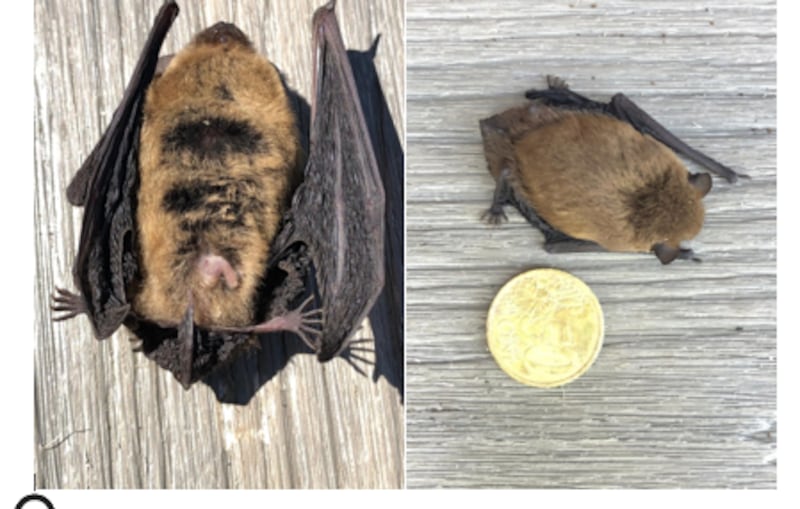Here is a photo of little grebes on Usher’s Lake in Swords. Are these not the best parents, mother carrying chick while father feeds it? – Niall MacNeill, Dublin
Or indeed it could be vice-versa. Newly hatched little grebes are not as well developed as ducklings and are kept warm on the backs of either of their parents.

I found this hoverfly on Pallenis maritima in our garden, but failed to identify the species. Its back markings join; those I found information on had only some marks that joined. Could you identify it? – Joe Burns, Co Cork
I hate to disagree with you Joe, but the image you sent of the hoverfly on your Canary Island daisy does not show the markings on the back joining up.
READ MORE
The cream crescent-shaped marks identify it as Scaeva pyrastri – the pied hoverfly. It is particularly fond of aphids. The National Biodiversity Data Centre does a very good beginners’ guide to hoverflies, available online.

This fox visits our garden quite often. He seems to be wearing a fairly elaborate collar. I’m wondering if foxes are being monitored. – Frank Daly, Rathgar, Dublin
Simone Ciuti of UCD has been working across Dublin city by tracking foxes with GPS radio collars, which are able to collect hi-res positions and movement of foxes. The collars also are equipped with sophisticated bio-loggers, able to gather information about their behaviour (feeding, sleeping, walking, running, etc). The goal is to understand the behaviour of urban foxes across the gradient of Dublin urbanisation, and also to find out whether they hunt natural prey (such as rats) as opposed to scavenging and eating human food leftovers. The collars are made of a degradable material, and they normally drop off a few months after deployment. Ciuti welcomes such observations from readers.

Our bird box has been taken over by wasps, which have covered the wooden exterior with their paper paste. What is going on and what is happening inside? – John Tobin
This is a successful takeover right enough. Wasps make their nest from raw exposed timber, so the bird box was a great source of such usable timber. The nest will continue to grow until the new queens, which are produced in late August, leave to mate and don’t return. They go immediately into sheltered overwintering quarters. The old queen, having by this stage laid about 40,000 eggs since she set up the nest in spring, is worn to a flitter and dies of exhaustion. The remaining wasps are the last of their generation and will die off over the following two months. The nest will not be reused.

I found this dead bat on the decking on the last Sunday of July. It had a body length of 50mm and a wingspan of 180mm. It appears to be a male. – M Maloney, Balbriggan
Because all five “toes” are free and because of its small size, this is a pipistrelle bat. Our three pipistrelle species, Soprano, Common and Nathusius, can be separated using a bat detector, as they emit their echolocation calls at different frequencies (55kHz, 46kHz and 20-39kHz respectively), but that’s not much help with a dead bat. Going on size, it more nearly matches a Common pipistrelle. Going on the colour of the penis, which you have so helpfully photographed, things are not so clear. That of the Common pipistrelle is grey-brown with a pale median stripe, while that of the Soprano is yellowish white with a bright median stripe. A bat detector would be worth investing in so that you could have a definitive identification of the bats in your area.
Please submit your nature query, observation, or photo, with a location, via irishtimes.com/eyeonnature











